The South East London Meccano Club was formed in 1976 to give Meccano enthusiasts in the area a chance to meet and swap ideas. The club holds four meetings a year, runs a public exhibition in the autumn, and has a quarterly newsletter.
In the Meccano section you will find some of the models that I have built since becoming a member in 1991.
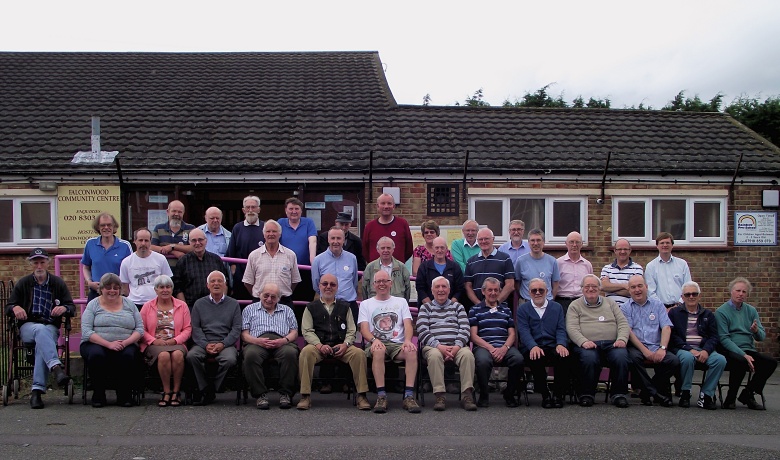
Club members outside Falconwood Community Centre at the club’s 40th anniversary meeting on 18th June 2016
Meccano Show
In 2010 I began to manage publicity for the club’s Meccano Show, producing leaflets, posters and online advertising:
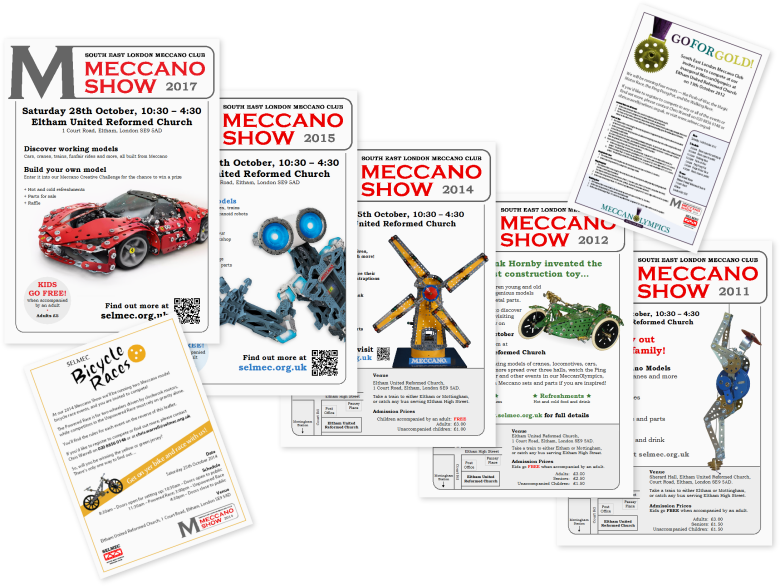
A selection of Meccano Show posters and leaflets
I also produce signage for the shows, including this Meccano Show sign mounted on a machine-cut piece of foam board:
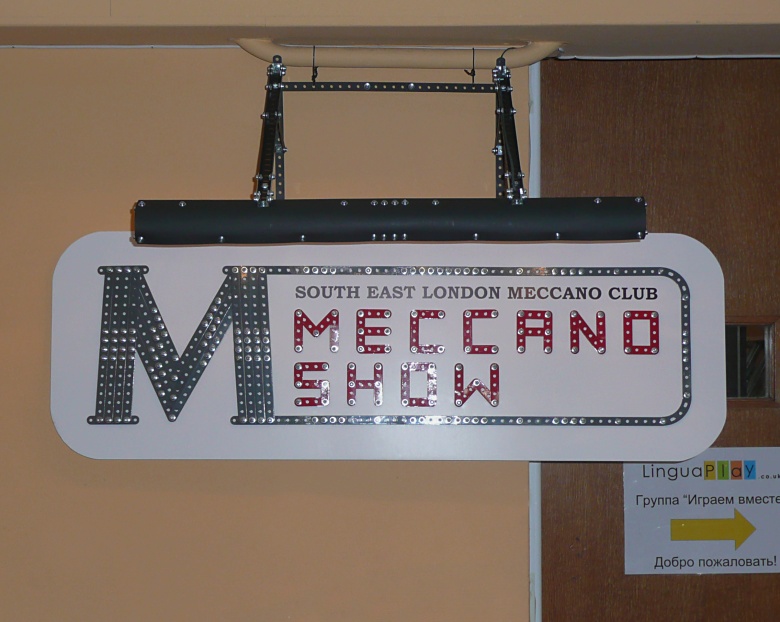
Meccano Show sign
At many shows club members compete to win prizes — notable competitions were the MeccanOlympics in 2012 (the year of the London 2012 Olympic Games) and the SELMEC Bicycle Races in 2014 (the year that Le Tour de France started in Leeds).
In 2017 I took over from Chris Warrell as Meccano Show organiser.
Hands-on experiences
Make It With Meccano
The club is invited to exhibit at several local events each year, and in 2014 was asked to provide a hands-on experience for visitors to the Greenwich Great Get Together.
Working in collaboration with Ralph Laughton and Spin Master (owners of the Meccano brand) I created the Make It With Meccano workshop which proved very successful, becoming a regular feature at club events.
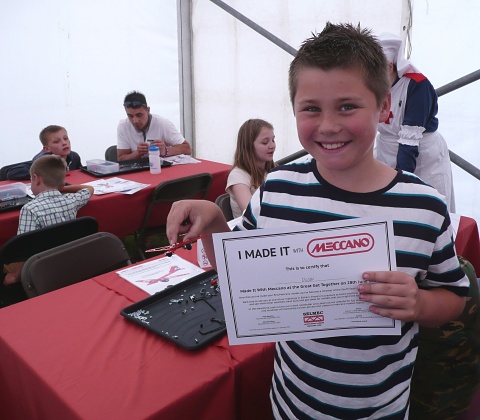
Make It With Meccano at the Greenwich Great Get Together in 2014
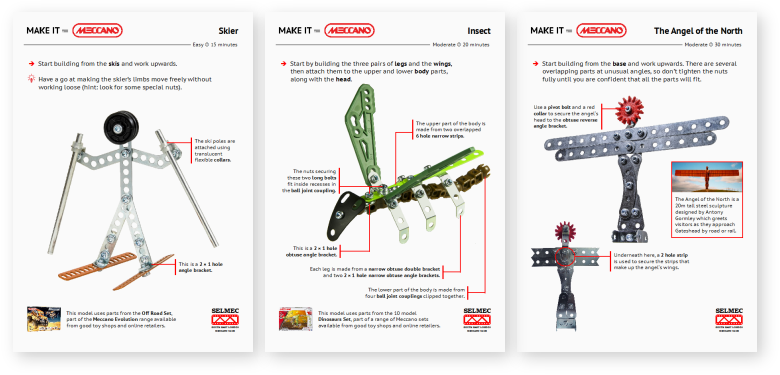
A few of the Make It With Meccano model instruction sheets
Bridge Building Challenge
For the Total Wipeout event at the Royal Institute of British Architects in 2016 I devised a Bridge Building Challenge in which entrants competed to build the strongest, lightest bridge of a minimum size:
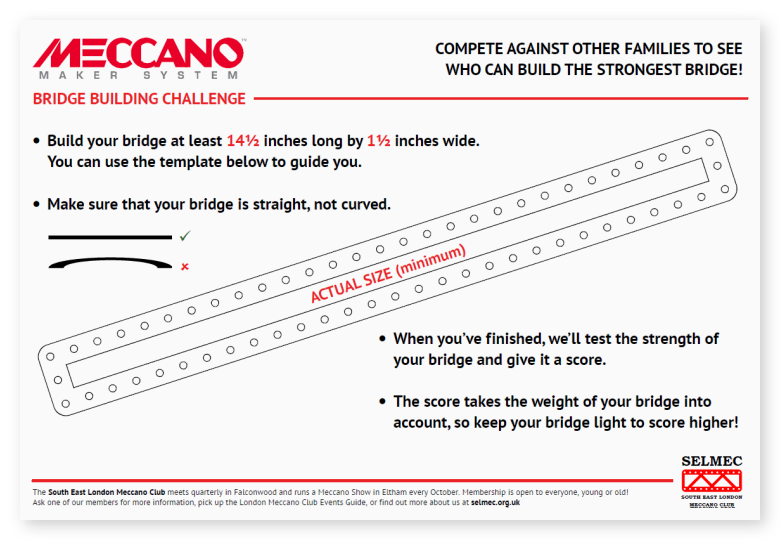
The Bridge Building Challenge instruction sheet
A finished bridge would first be weighed, then placed upon a test jig that I built. A pressure-sensitive platform would then be placed underneath the bridge and its height adjusted so that it touched the underside without activating the pressure switch.
Nuts and bolts would then be added progressively to a bucket placed upon the bridge until the pressure switch was activated (signalled by a light and a buzzer), after which the bucket was weighed to determine the bridge failure weight.
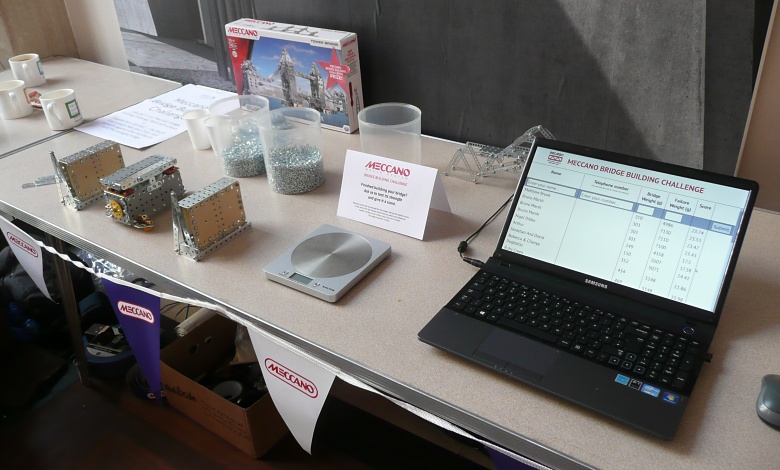
The Bridge Building Challenge test jig (left) and record-keeping system (right)
I created an offline browser-based system running on a laptop computer using JavaScript and local storage to record entries, calculate scores (failure weight divided by bridge weight) and display a leaderboard:
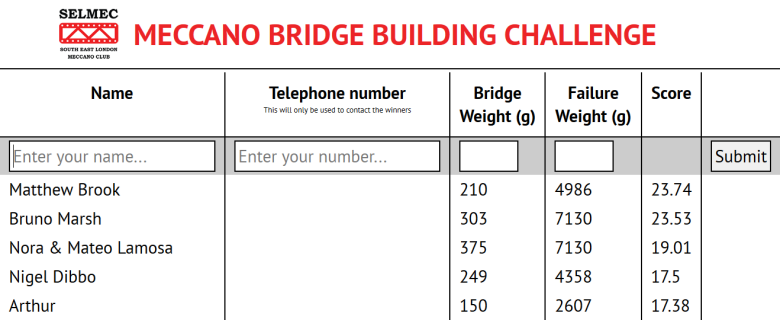
The record-keeping system for the Bridge Building Challenge
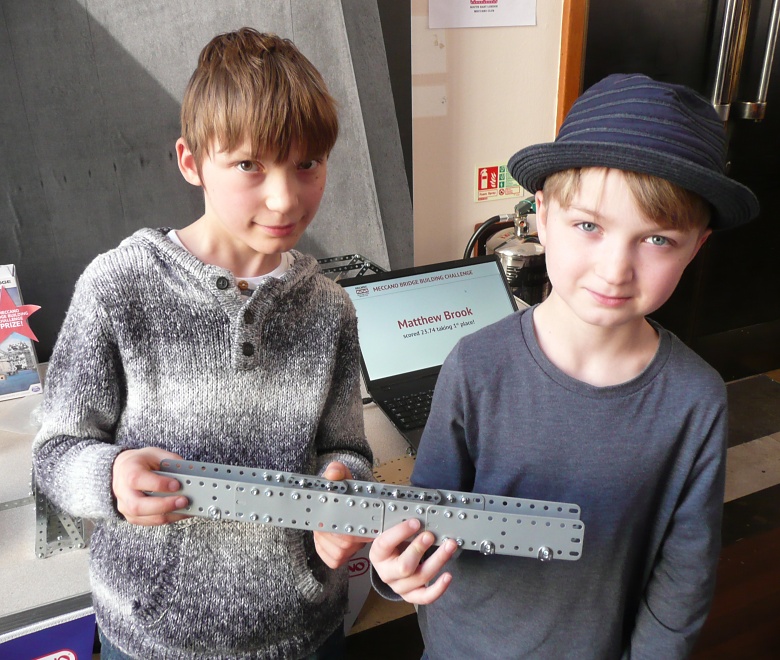
Bridge Building Challenge winner Matthew Brook (left)
Meccano Creative Challenge
Since 2015 I have run the Meccano Creative Challenge at the club’s Meccano Shows. Entrants can build anything they like from the parts available and submit their models for judging by the club’s Secretary and Chairman.
I created a system running on a laptop computer using VB.Net to record entries and aid judging:
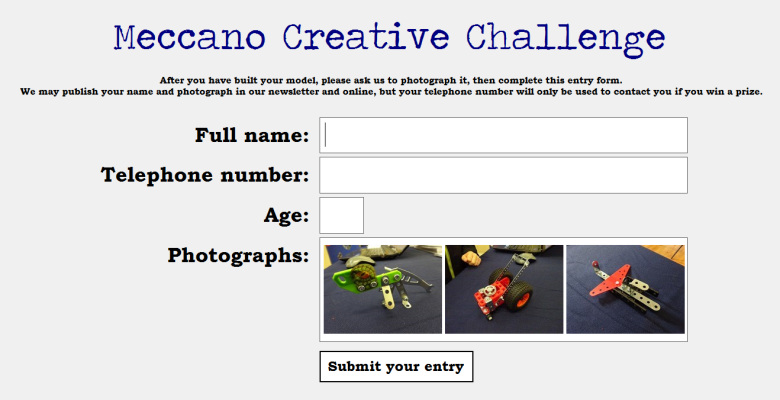
The record-keeping system for the Meccano Creative Challenge
Photographs taken of each entrant and their model are sent wirelessly from the camera to the laptop computer while the entrant inputs their contact details, and can then be assigned to the entry.
Entrants are grouped into three age categories for judging, and the system streamlines the process of creating a shortlist of potential winners by displaying thumbnail photos of each entry:
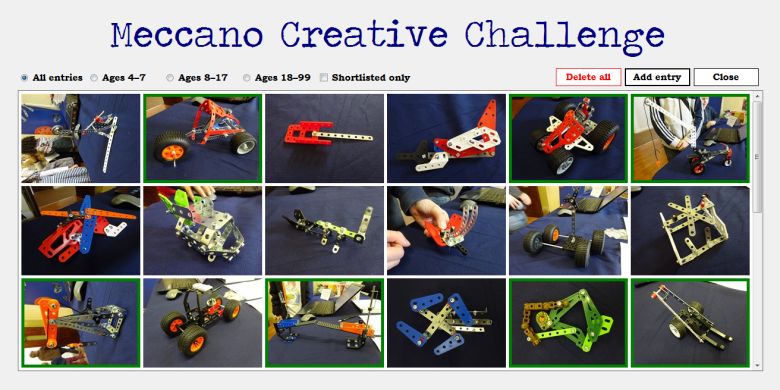
The judging area of the record-keeping system for the Meccano Creative Challenge
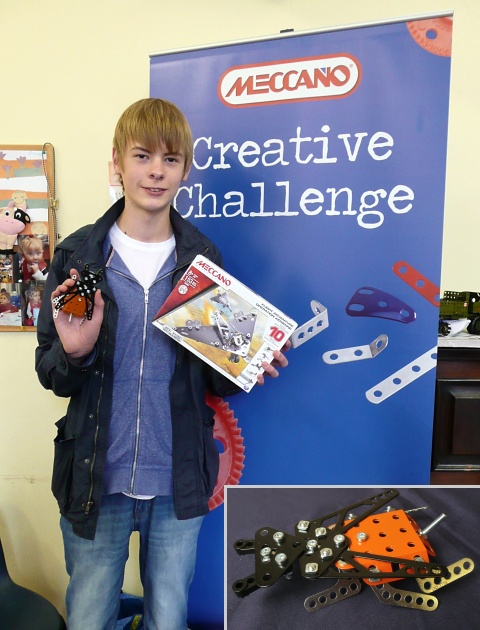
2015 Meccano Creative Challenge winner Nick Beck, with his model (inset)
Website
My website for the club carries details of forthcoming events along with an archive of articles from the club newsletter. There is also a searchable gallery of over 2,500 models built by members, featuring over 6,000 photographs and over 350 videos.
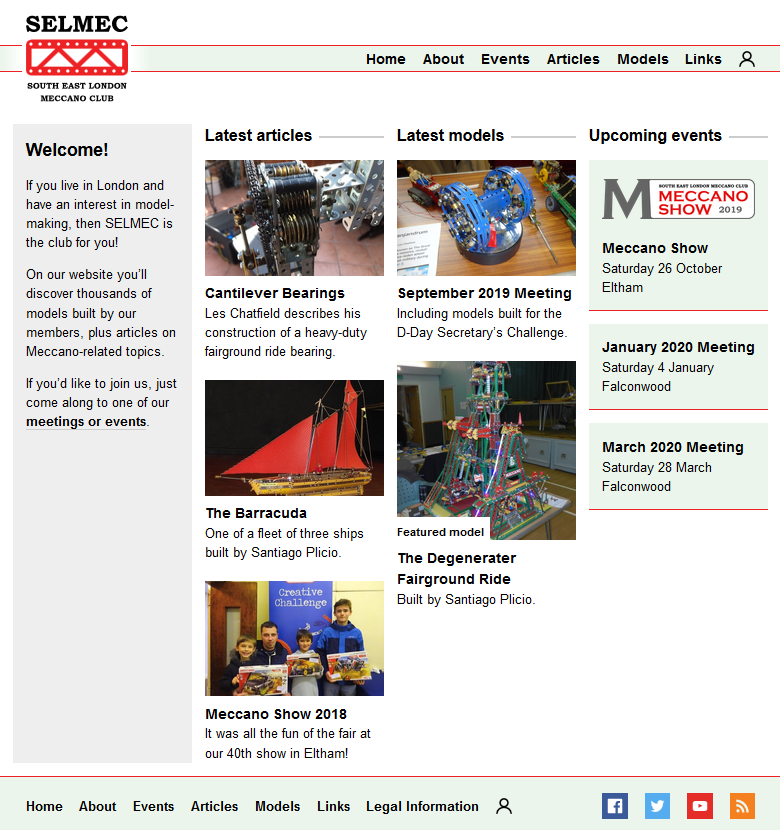
The website homepage
Member Services
Members can log into the Member Services section of the club website to access a newsletter archive and edit their models in the model gallery. They can also view and reply to messages left by visitors.
Administrators may edit user accounts, models, articles, newsletters and event listings. They can also moderate messages and view the event log.
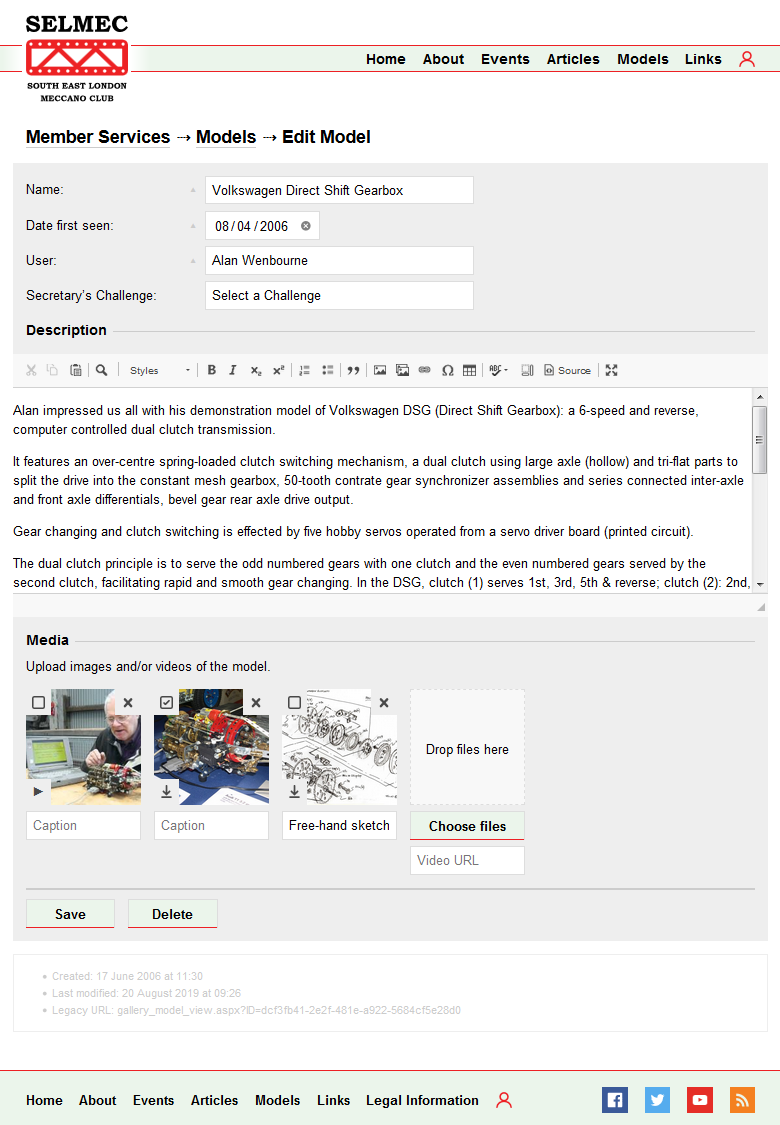
Editing a model, when logged in as an administrator